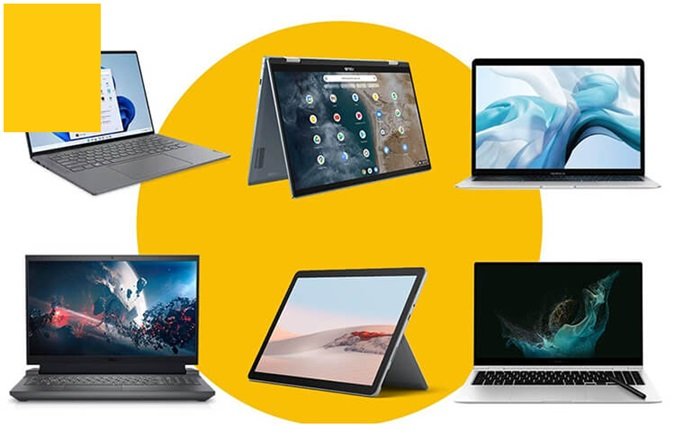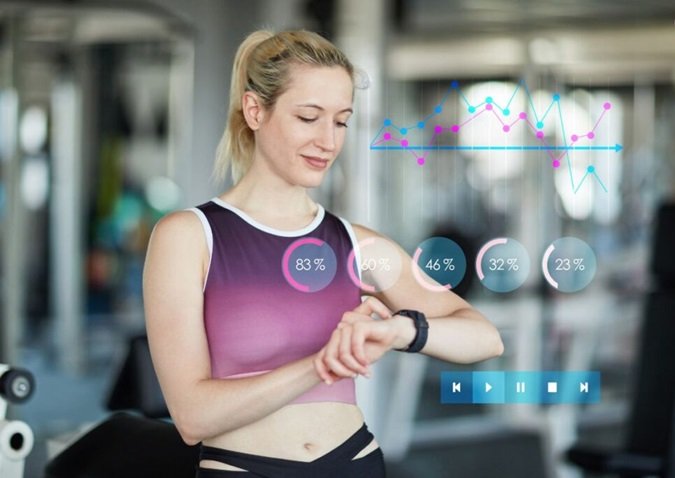How to Choose the Perfect Laptop for Your Needs: Choosing the perfect laptop can be a daunting task, given the vast array of options available in the market. Whether you’re a student, professional, gamer, or casual user, finding the right laptop to meet your specific needs requires careful consideration of various factors. This comprehensive guide will walk you through the essential aspects to consider, helping you make an informed decision.
1. Understand Your Primary Use Case
The first step in choosing the perfect laptop is to determine how you’ll primarily use it. Different use cases demand different features, so it’s crucial to identify your needs upfront. How to Choose the Perfect Laptop.
a. Student Use
If you’re a student, you’ll likely need a portable laptop, that has a long battery life, and is capable of handling tasks like word processing, web browsing, and running educational software. A mid-range processor, 8GB of RAM, and sufficient storage should meet your needs.
b. Professional Use
For professionals, especially those in fields like graphic design, programming, or video editing, performance is key. You’ll want a laptop with a powerful processor, ample RAM (16GB or more), and a high-resolution display. Storage capacity and connectivity options are also important for managing large files and multiple peripherals.
c. Gaming
Gamers require a laptop with a high-performance graphics card (GPU), a fast processor, and plenty of RAM. A high refresh rate display and good cooling system are also essential to ensure a smooth gaming experience. Additionally, you’ll need ample storage space for game installations.
d. Casual Use
If your needs are more basic—like browsing the web, streaming videos, and using office applications—a budget laptop with an entry-level processor, 4-8GB of RAM, and modest storage will suffice.
2. Consider the Operating System
The operating system (OS) is the software platform on which your laptop operates, and it plays a significant role in your overall user experience. The three main options are:
a. Windows
Windows is the most popular and versatile operating system, supporting a wide range of software. It’s ideal for users who need compatibility with various programs, especially in professional environments. Windows laptops come in a variety of price ranges, from budget-friendly to high-end models.
b. macOS
Apple’s macOS is known for its sleek design, ease of use, and seamless integration with other Apple products. It’s preferred by many professionals, particularly in creative fields like design and video production. However, MacBooks tend to be more expensive, and the software ecosystem is more limited compared to Windows. How to Choose the Perfect Laptop
c. Chrome OS
Chrome OS is a lightweight operating system designed by Google, primarily for web-based applications. Chromebooks are affordable, easy to use, and ideal for users who rely on cloud services like Google Drive. However, they have limited offline functionality and may not be suitable for more demanding tasks.
3. Determine the Right Size and Portability
Laptop sizes range from compact, ultra-portable models to large, powerful machines. Consider how often you’ll be carrying your laptop and where you’ll be using it.
a. 11-13 inches
Laptops in this size range are highly portable, making them perfect for students and travelers. They are lightweight and easy to carry but may have smaller keyboards and screens, which could be a drawback for some users.
b. 14-15 inches
This size range offers a balance between portability and usability. Laptops with 14-15 inch screens are still portable but provide a more comfortable viewing experience and typically have full-sized keyboards.
c. 17 inches and above
Larger laptops are ideal for users who prioritize performance and screen real estate over portability. These are commonly used by gamers, designers, and professionals who need a large display for multitasking or detailed work. However, they are heavier and less convenient to carry around.
4. Evaluate Performance Specifications
The performance of a laptop is largely determined by its hardware components. Understanding these specs will help you choose a laptop that meets your needs.
a. Processor (CPU)
The processor is the brain of your laptop. Here are the main options:
- Intel Core i3/i5/i7/i9: Intel’s Core series is popular for its balance of performance and power efficiency. Core i3 is suitable for basic tasks, i5 for general use, i7 for more demanding applications, and i9 for high-end gaming and professional work.
- AMD Ryzen 3/5/7/9: AMD’s Ryzen processors offer similar performance tiers to Intel’s Core series, often at a lower price. They are particularly well-regarded in gaming and multitasking scenarios.
- Apple M1/M2: Apple’s M1 and M2 chips are custom-designed for MacBooks, offering impressive performance and battery life. They are optimized for macOS and provide excellent speed for most tasks.
b. RAM
RAM (Random Access Memory) affects your laptop’s ability to handle multiple tasks simultaneously. For most users, 8GB of RAM is sufficient. However, professionals and gamers may require 16GB or more for optimal performance.
c. Storage
Storage capacity determines how much data you can store on your laptop. There are two main types:
- HDD (Hard Disk Drive): HDDs offer larger storage capacities at lower prices but are slower compared to SSDs.
- SSD (Solid State Drive): SSDs are faster and more reliable than HDDs but tend to be more expensive per gigabyte. For most users, a 256GB or 512GB SSD provides a good balance of speed and storage space.
d. Graphics Card (GPU)
If you’re into gaming, video editing, or 3D modeling, a dedicated GPU is essential. Nvidia and AMD are the leading GPU manufacturers, with Nvidia’s GeForce and AMD’s Radeon series being popular choices. Integrated graphics (built into the CPU) are sufficient for basic tasks and casual gaming.
5. Display Quality
How to Choose the Perfect Laptop. The display is one of the most important aspects of a laptop, as it directly affects your visual experience.
a. Resolution
The most common display resolution is Full HD (1920×1080), which provides a clear and sharp image. Higher resolutions like QHD (2560×1440) and 4K (3840×2160) offer even better clarity, but they may consume more battery power and increase the laptop’s price.
b. Panel Type
- IPS (In-Plane Switching): Offers better color accuracy and wider viewing angles, making it ideal for creative professionals.
- TN (Twisted Nematic): Generally cheaper and faster but with limited viewing angles and color accuracy. It’s often used in gaming laptops for its quick response times.
- OLED: Provides deep blacks and vibrant colors, offering the best display quality. However, it is also more expensive and can suffer from burn-in over time.
c. Refresh Rate
A higher refresh rate (120Hz, 144Hz, or 240Hz) is beneficial for gamers, as it provides smoother motion and a more responsive gaming experience. For general use, a standard 60Hz display is usually sufficient.
6. Battery Life
Battery life is a critical factor, especially if you plan to use your laptop on the go. Laptops with more powerful hardware (e.g., gaming laptops) tend to have shorter battery life. Look for a laptop that can offer at least 8-10 hours of battery life on a single charge for all-day use.
7. Build Quality and Design
The build quality of a laptop affects its durability and overall user experience. Consider the following aspects:
a. Material
Laptops can be made from plastic, aluminum, magnesium alloy, or carbon fiber. Metal and carbon fiber designs are generally more durable and premium-feeling but can be more expensive.
b. Keyboard and Trackpad
A comfortable keyboard and responsive trackpad are essential, especially if you type a lot. Look for a keyboard with good key travel and tactile feedback. A large, precise trackpad with multi-touch gesture support can significantly enhance your workflow. How to Choose the Perfect Laptop.
c. Port Selection
Consider the types of ports you need for your peripherals. Common ports include USB-A, USB-C, HDMI, and an SD card reader. Thunderbolt 3 or 4 ports offer fast data transfer and can connect to multiple external devices, including monitors.
d. Weight and Thickness
If portability is important, consider the weight and thickness of the laptop. Ultra-thin laptops are easy to carry but may sacrifice some performance or cooling efficiency.
8. Price and Warranty
How to Choose the Perfect Laptop: Your budget will play a significant role in determining which laptop is right for you. Set a realistic budget based on your needs and compare laptops within that range. Additionally, consider the warranty and after-sales support offered by the manufacturer. A longer warranty and Good Customer Service can save you a lot of hassle in the long run.
9. Brand Reputation and Reviews
How to Choose the Perfect Laptop: Before making a final decision, research the reputation of the brand and read user reviews. Brands like Apple, Dell, HP, Lenovo, and ASUS are well-known for producing reliable laptops. Reviews can provide insights into real-world performance, build quality, and potential issues that may not be apparent from the specifications alone.
Conclusion
Choosing the perfect laptop requires careful consideration of your specific needs, preferences, and budget. By understanding your primary use case, evaluating the key hardware specifications, and considering factors like portability, display quality, and battery life, you can find a laptop that meets your requirements. Remember to balance performance with price, and don’t forget to check reviews and brand reputation to ensure you’re making a wise investment. Whether you’re a student, professional, gamer, or casual user, there’s a perfect laptop out there waiting for you. How to Choose the Perfect Laptop.


